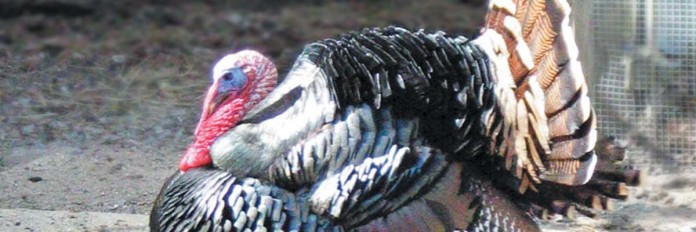Although the seasonal change to spring has been showing hints of an early arrival it’s a sure bet the real deal will be in its full glory by opening day of Ohio’s popular spring wild turkey season.
That means turkey hunters are starting to warm up to the idea of very early mornings in the woods, very elusive turkeys and plenty of competition.
Behavior changes
Typical gobbler behavior changes as the hunting season progresses. Early on, gobblers can still be part of the winter flock that feeds and socializes together. But more likely, the birds are into more of a breeding mood and spend a great deal of time and energy finding, growing, and minding a harem of sorts.
Mating in the morning
Each morning the gobblers find the hens and spend the morning hours mating with them.
Once mated, hens will leave the flock to return to their ground nest, lay one egg, and then often return to the gang.
The boss of the harem is what is called a dominant bird and there may also be lesser, or submissive gobblers that spend much of their time watching the boss at work and waiting for an opportunity to sneak a little time with a wandering hen.
The pecking order
The whole springtime display of behaviors is an obvious and perfect demonstration of a thing called the pecking order.
Early season hunting can be frustrating because of the mating process that is going on, a time when the gobblers refuse to leave a harem of hens for any reason. However, when all of the hens in the group have been serviced, the gobbler will often respond to a hunter s call, a good reason to hunt until quitting time.
Smart turkey hunters learn to adjust their strategies as the season progresses.
Smart birds
Many hunters consider wild turkeys to be the smartest of all game birds and animals. That’s not reality. A turkey is simply the product of its environment.
Consider this, from its first exposure to the world, a turkey is in the crosshairs of nearly every other critter in the forest and it never stops.
Alert and not curious
Turkeys can see and hear even the slightest movement and the smallest sound. When they do, turkeys flee. They don’t stop to look back, and they aren’t curious. Distance is the only thing wild turkeys want between them and any hint of danger.
Hunting rules
Here are the rules: Ohio hunters can kill two bearded turkeys, but not on the same day and not on the same tag. Bearded is the key word here since all gobblers are bearded with one-year-old birds, called jakes, sporting very small beards and older gobblers growing very visible ones.
Beards are beards in name only; they actually sprout from the gobbler’s chest, not it’s chin. Although not common, some hens also have visible beards and are thus legal targets.
But with the rare occasion in mind, the spring season is gobblers only.
Hunting hours
Turkey hunting hours for the first two weeks of the season are from 30 minutes before sunrise until noon. The afternoon is left undisturbed so that hens can go about their nesting duties.
During the last two weeks of the four-week spring season, hours are expanded to 30 minutes before sunrise until sunset. These hours are based on published sunrise-sunset charts. Harvested must be checked at a checking station, online or by phone by 11:30 p.m.
Harvested birds must be tagged in the field before moving with an attached tag indicating the hunter’s name, date, time of kill, and county of kill.
A leashed dog may be used to find a wounded turkey but not for any other use. Like any type of hunting, written permission from the landowner is required.













